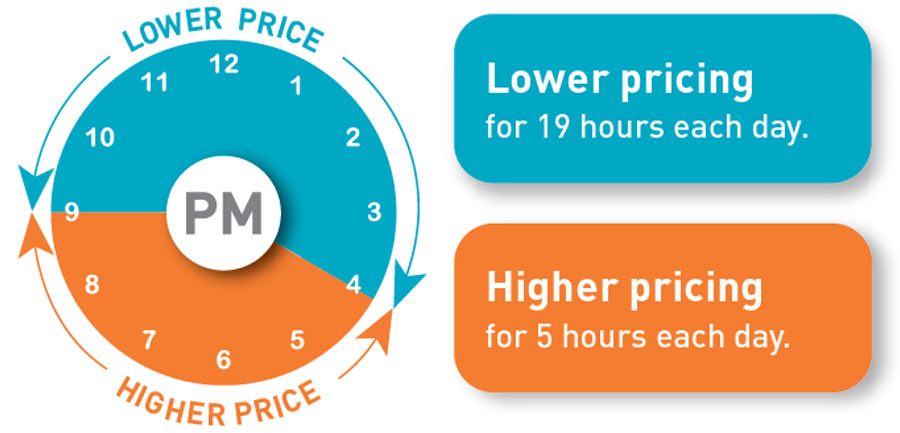
🎶 Ch-ch-ch-ch-changes! 🎶 Yes, this is a concept that we have been all too familiar with lately. Changes to work, changes to schooling, changes to how we live, shop, travel, etc. Not all of these changes have been bad and, well, we’re kind of getting used to the whole “being flexible” thing. With our ever-changing lifestyles starting to become our new normal, it may be time for us to make adjustments in other areas such as energy consumption combined with PG&E’s Time-of-Use (Peak Pricing 4-9 p.m. Every Day) rate plan.
Energy consumption?! Time-of-Use rate plan?! Whaaaa?! I know, I know, hear me out. Now that many are working or doing schooling from home, we have more control over how our daily schedules are set up. If we are willing to make slight tweaks to when we run appliances, it can actually help manage energy costs while, at the same time, helping the environment. See? All good things, all good things…
PG&E Time-of-Use (Peak Pricing 4-9 p.m. Every Day) Rate Plan — A Cleaner California
So why the change? California tends to be a pretty environmentally conscious state. As such, the Time-of-Use (Peak Pricing 4-9 p.m. Every Day) rate plan is being introduced in an effort to encourage the use of cleaner, renewable energy. This is energy produced by natural sources such as wind and solar power, both of which California has plenty of.
“The State of California is taking steps to support a cleaner, smarter and more reliable energy grid by switching many residential electric customers to a Time-of-Use rate plan that encourages shifting electricity usage to off-peak hours when demand is lower and renewable energy is more readily available.”
— PG&E
This is definitely a step in the right direction, right?! On the Time-of- Use (Peak Pricing 4-9 p.m. Every Day) rate plan, electricity prices are lower 19 hours a day during “off-peak” hours. Electricity prices are slightly higher between 4 p.m. and 9 p.m. during “peak time” when demand for electricity is higher. On the consumer side, you won’t notice any difference in power usage or electrical stability. But, slight changes might be reflected in your monthly statement or in an extra dose of that “warm and fuzzy feeling” you get when you choose to power your appliances with clean, renewable energy.
While cost is a factor, I must say that Frans gets pretty excited when he tracks our energy usage using an app and sees that we’re using mostly solar-generated energy 🙂. He is the one who actually uses the available tools regularly and keeps us on our toes regarding when and how much energy we should (or shouldn’t) use. You can check out your energy use patterns as well by logging into your account online at pge.com.


PG&E Time-of-Use Rate Plan — San Francisco Bay Area Rollout
Many eligible PG&E residential electric customers will be automatically moved to the Time-of-Use (Peak Pricing 4-9 p.m. Every Day) rate plan. This change will roll out to various Bay Area counties starting next month and will continue through March 2022. Find out when customers in your county will transition to the Time-of-Use rate plan here.
Customers who are scheduled to automatically transition can try this rate plan risk-free for one full year but also have the option of choosing a different rate plan, such as the Tiered rate plan or an Electric vehicle rate plan, at any time.
You might wonder, though, does switching over to PG&E’s Time-of-Use (Peak Pricing 4-9 p.m. Every Day) rate plan mean major changes for you and your family? How do you even gauge your habits in consuming energy? That’s what Frans and I will talk about for the next post in this series. Stay tuned and feel free to add any questions in the comment section as we have an interview with a PG&E representative coming up as well.
In the meantime, feel free to visit pge.com/toutransition for more information.
This is a sponsored conversation written by me on behalf of PG&E. The opinions and text are all mine.








